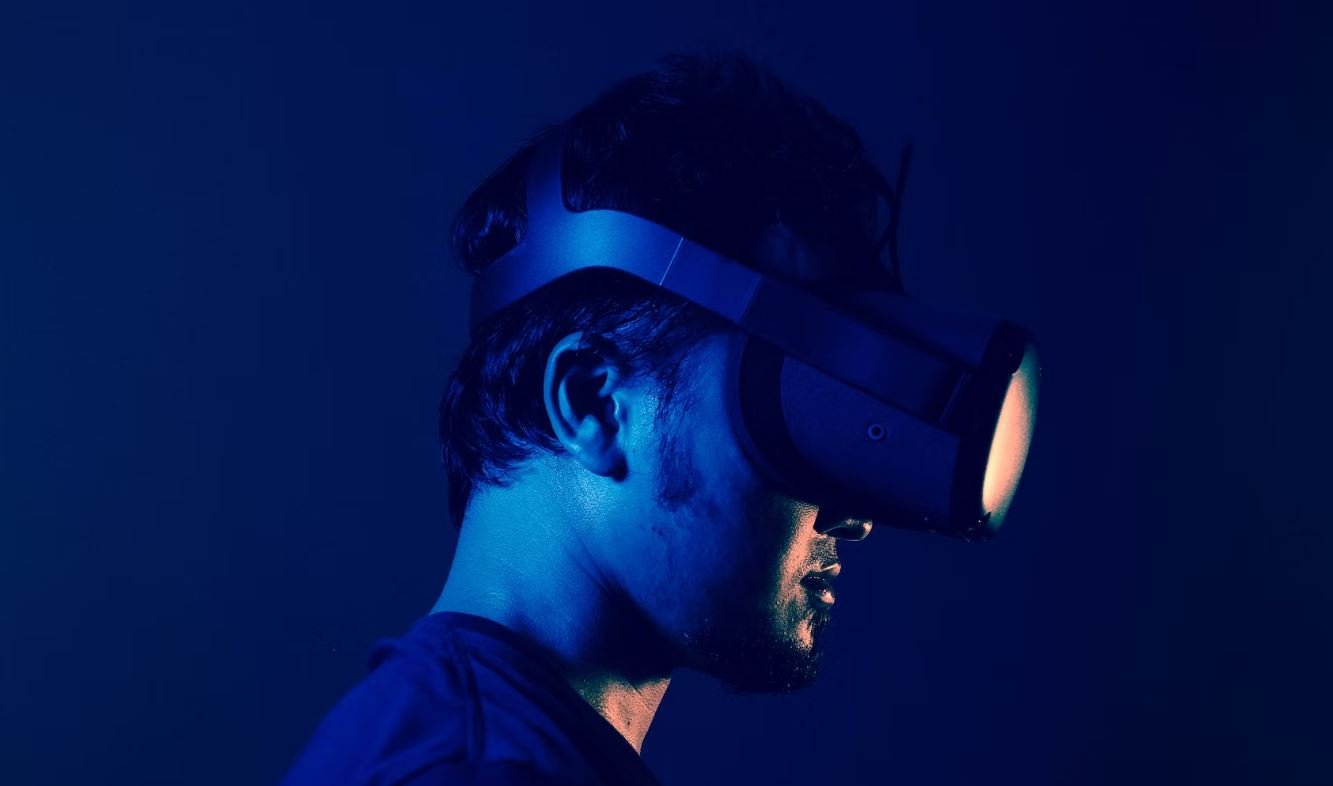Film Terms
Whether you are an avid film lover, a casual movie watcher, or an aspiring filmmaker, understanding film terms can greatly enhance your movie experience. From technical jargon to industry-specific vernacular, this article aims to familiarize you with essential film terminology.
Key Takeaways:
- Acquaint yourself with essential film terms to enhance your understanding of movies.
- Understanding film terminology allows for better communication among filmmakers and enthusiasts.
- Appreciate the craftsmanship behind films by grasping important industry terms.
1. Common Film Terms
Let’s start with some basic film terms that are frequently used in the industry:
- Shot: A single, uninterrupted sequence recorded by a camera.
- Frame: A single image captured by the camera.
- Scene: A series of connected shots that take place in the same location and time.
- Montage: A sequence of shots skillfully edited together to convey a specific message or tell a story.
Did you know that the term “montage” originates from the French word meaning “assembly” or “editing”?
2. Cinematography Terms
Understanding cinematography terms allows you to appreciate the artistry behind the visuals:
- Composition: The arrangement and framing of subjects within a shot.
- Aspect Ratio: The proportional relationship between the width and height of a film frame.
- Depth of Field: The range of distance within a shot in sharp focus.
Interesting fact: Cinematographer Gregg Toland’s innovative use of deep focus in the movie “Citizen Kane” revolutionized film aesthetics.
| Film Aspect Ratios | Common Examples |
|---|---|
| 1.33:1 (Academy Ratio) | Early films and television |
| 1.85:1 (Widescreen) | Most contemporary films |
| 2.39:1 (Cinemascope) | Epic and widescreen films |
3. Post-Production Terms
Post-production involves various processes after shooting, and some key terms include:
- Editing: The process of selecting, arranging, and manipulating shots to create a final version.
- Sound Design: The creation and integration of sound elements, including dialogue, music, and effects.
- Visual Effects (VFX): The addition of computer-generated imagery (CGI) to enhance or modify footage.
Did you know that the sound design for the movie “Inception” involved manipulating the musical score to create sonic illusions?
| Post-Production Process | Key Terms |
|---|---|
| Editing | Assembly, rough cut, final cut |
| Sound Design | Foley, ADR, sound mixing |
| Visual Effects (VFX) | Compositing, green screen, CGI |
4. Storytelling and Narrative Terms
When it comes to analyzing and discussing the narrative aspect of films, these terms come into play:
- Plot: The sequence of events in a film that form its story.
- Character Arc: The transformation or development of a character throughout the story.
- Foreshadowing: Hints or clues that suggest future events in the plot.
Interesting fact: The term “MacGuffin,” coined by Alfred Hitchcock, refers to an object or goal that motivates the characters but is ultimately unimportant to the overall story.
5. Film Distribution Terms
Understanding film distribution terms sheds light on how movies reach audiences:
- Theatrical Release: When a film is screened in cinemas for the public.
- Box Office: The amount of money generated by ticket sales for a particular film.
- DVD/Blu-Ray Release: The availability of a film for purchase or rental on physical media.
Did you know that the highest-grossing film of all time, “Avatar,” earned over $2.8 billion at the global box office?
Final Thoughts
Acquiring knowledge about film terms can deepen your understanding and appreciation of movies. By familiarizing yourself with these essential terms, you can communicate better with fellow film enthusiasts and gain a deeper appreciation for the craftsmanship involved. So next time you are engrossed in a film, pay attention to the film lingo behind the scenes, and enrich your cinematic experience.

Common Misconceptions
Paragraph 1
One common misconception that people often have about film terms is that cinematography and videography are interchangeable terms. While they share similarities, these terms have distinct differences. Cinematography refers to the art and technique of capturing scenes in a motion picture, focusing on the artistic and creative aspects of framing, lighting, and composition. On the other hand, videography is the process of recording live-action events on video, typically used in events, weddings, or documentaries.
- Cinematography and videography have different focuses: artistic vs. documentation
- Cinematography emphasizes composition, lighting, and framing
- Videography captures live-action events on video
Paragraph 2
Another common misconception is that film directors and cinematographers are the same role. While these roles often collaborate closely in the filmmaking process, they have distinct responsibilities. The film director is responsible for overseeing the entire creative process, making decisions about script adaptation, casting, performance direction, and overall vision. On the other hand, the cinematographer is in charge of translating the director’s vision into visual language, handling camera placement, lighting, and framing to enhance the storytelling.
- Directors have an overarching creative role
- Cinematographers translate the director’s vision into visual language
- Cinematographers handle camera work, lighting, and framing
Paragraph 3
A misconception often found among audiences is that special effects (FX) and visual effects (VFX) are the same thing. Although both terms involve creating illusions and enhancing visuals in film, they differ in execution and purpose. Special effects refer to the practical effects achieved on set through physical means, such as explosions, prosthetics, or stunt work. Visual effects, on the other hand, involve computer-generated imagery (CGI) that is added in post-production to enhance or create elements that cannot be achieved practically.
- Special effects are practical effects achieved on set
- Visual effects involve computer-generated imagery (CGI)
- VFX is added in post-production
Paragraph 4
It is a common misconception that the terms screenplay and script are interchangeable. While the terms are related, they have different meanings and usage. A screenplay refers to a detailed blueprint of a film’s story, including dialogue, actions, and scenes, primarily used during the pre-production and production stages. On the other hand, a script is a more general term that can refer to the written material for any form of performance, including plays, TV shows, and films.
- A screenplay is a detailed blueprint for a film
- A script is a more general term for written material in various performances
- A screenplay is specific to the film industry
Paragraph 5
Lastly, a common misconception is that the terms film editing and video editing are synonymous. While they share similarities in techniques and principles, they refer to different domains within the creative sector. Film editing pertains specifically to the manipulation of footage shot on celluloid film, involving techniques like cutting, splicing, and rearranging physical film strips. Video editing, on the other hand, encompasses the digital manipulation and arrangement of video footage that is captured on various digital formats.
- Film editing is the manipulation of celluloid film
- Video editing encompasses digital manipulation of video footage
- Film editing relies on physical film strips

Film Terms
Film is a powerful medium that combines visual imagery, storytelling, and technical elements to captivate audiences. To fully appreciate and understand the art of filmmaking, it is essential to be familiar with various film terms. The following tables highlight some of these terms, providing valuable information and insights into the world of cinema.
Genre Characteristics
Genres in film provide a framework for categorizing and understanding different types of movies. Each genre has its own unique characteristics that define its style and themes.
| Genre | Characteristics |
|---|---|
| Action | High-energy sequences, thrilling stunts, and intense physicality. |
| Comedy | Lighthearted and humorous narrative, designed to entertain and provoke laughter. |
| Drama | Emotionally driven plots focusing on human conflicts, relationships, and character development. |
| Horror | Creates an atmosphere of fear, suspense, and shock to evoke strong emotional reactions from the audience. |
Camera Shots
The use of different camera shots and angles creates varying visual effects, influencing the audience’s perspective and engagement with the film.
| Shot Type | Description |
|---|---|
| Extreme Long Shot | Shows the subject from a considerable distance, establishing the setting or context. |
| Medium Shot | Frames the subject from the waist or knees up, providing a closer view while still capturing some background. |
| Close-up | Focuses on a specific detail or object, intensifying emotional impact or emphasizing significance. |
| Bird’s Eye View | Shot from directly above, offering a unique perspective and enhancing spatial awareness. |
Editing Techniques
Editing techniques play a crucial role in shaping the narrative, pacing, and overall flow of a film.
| Technique | Description |
|---|---|
| Crosscutting | Alternating between two or more scenes happening simultaneously, building tension or showing parallel events. |
| Montage | A series of short shots edited together to condense time, convey information, or evoke emotions. |
| Match Cut | Seamlessly transitioning between shots with visual similarities, creating a smooth and cohesive visual transition. |
| Jump Cut | Abruptly cutting between two shots of the same subject, often used for stylistic effect or to depict disorientation. |
Sound Design Elements
Sound design enhances the cinematic experience by incorporating various elements that stimulate the senses and immerse the audience.
| Element | Description |
|---|---|
| Dialogue | The spoken words/dialogues exchanged between characters, conveying important information and driving the story. |
| Music | Original scores or pre-existing music used to create mood, evoke emotions, or emphasize key moments. |
| Sound Effects | Artificial or recorded sounds that enhance the realism, atmosphere, and impact of a film. |
| Foley | Studio-generated sound effects, typically synchronized with on-screen actions and movements. |
Film Techniques
Various film techniques are used to convey information, evoke emotions, and immerse the audience into the cinematic world.
| Technique | Description |
|---|---|
| Tracking Shot | A smooth camera movement that follows the subject, creating a sense of urgency or highlighting visual details. |
| Point of View | Showcasing the scene from the perspective of a specific character, allowing the audience to see what they see. |
| Slow Motion | Slowing down the action, often used to emphasize a crucial moment, evoke emotions, or highlight details. |
| Deep Focus | Keeping the foreground and background in sharp focus simultaneously, enabling visual depth and layered compositions. |
Academy Award Winners
The Academy Awards, also known as the Oscars, recognize excellence in filmmaking across various categories. Here are some memorable winners throughout history.
| Category | Memorable Winner | Year |
|---|---|---|
| Best Picture | The Godfather | 1972 |
| Best Actress | Meryl Streep | 1982 |
| Best Director | Steven Spielberg | 1993 |
| Best Original Screenplay | Quentin Tarantino | 1994 |
Box Office Records
Some movies have achieved remarkable success at the box office, drawing massive audiences and generating substantial revenue.
| Movie | Box Office Revenue | Year |
|---|---|---|
| Avengers: Endgame | $2,790,200,000 | 2019 |
| Avatar | $2,790,211,988 | 2009 |
| Titanic | $2,187,463,944 | 1997 |
| Star Wars: The Force Awakens | $2,068,223,624 | 2015 |
Movie Franchises
Several movie franchises have become pop culture phenomena, captivating audiences across multiple installments.
| Franchise | Number of Movies | Total Box Office Revenue |
|---|---|---|
| Marvel Cinematic Universe | 23 | $22,590,356,254 |
| Star Wars Saga | 11 | $10,329,674,208 |
| James Bond | 25 | $7,078,332,109 |
| Harry Potter | 8 | $7,726,710,825 |
Famous Movie Quotes
Memorable movie quotes often become part of popular culture, reflecting iconic moments and powerful dialogues.
| Movie | Quote | Year |
|---|---|---|
| The Wizard of Oz | “There’s no place like home.” | 1939 |
| Star Wars | “May the Force be with you.” | 1977 |
| Casablanca | “Here’s looking at you, kid.” | 1942 |
| The Shining | “Here’s Johnny!” | 1980 |
Conclusion
Film terms are essential to understand the intricacies and enjoy the magic of cinema fully. Whether studying filmmaking or simply appreciating the art form as an audience, knowing these terms enhances the overall movie-watching experience. From genres to camera shots, sound design to editing techniques, and iconic movie quotes to box office records, the world of cinema offers a rich tapestry of elements that leave a lasting impression. So grab some popcorn, immerse yourself in the fascinating world of film, and let the stories unfold.
Frequently Asked Questions
Question 1
What is a screenplay?
A screenplay is a written document that outlines the story, dialogue, and actions of a film. It serves as the foundation for the production, guiding the cast and crew.
Question 2
What is cinematography?
Cinematography refers to the art and technique of capturing and recording moving images on film or digital media. It encompasses decisions related to camera angles, lighting, composition, and camera movements.
Question 3
What is a storyboard?
A storyboard is a visual representation of a film or video sequence. It consists of a series of illustrations or images that show how the scenes will be shot, including details of camera angles, movements, and transitions.
Question 4
What does the term ‘mise en scène’ mean?
Mise en scène refers to the visual elements and arrangement within a film frame. It includes aspects such as sets, costumes, props, lighting, and actor positioning, all of which contribute to the overall aesthetic and storytelling.
Question 5
What is a dolly shot?
A dolly shot is a camera movement in which the camera is mounted on a wheeled vehicle called a dolly. It allows the camera to smoothly move closer to or further from the subject, creating a sense of depth and perspective.
Question 6
What is film editing?
Film editing is the process of selecting, arranging, and manipulating the recorded footage to create a coherent and engaging film. It involves making decisions regarding the sequence, duration, and transitions between shots.
Question 7
What is a tracking shot?
A tracking shot is a camera movement where the camera follows a subject horizontally, vertically, or along a curve. It is achieved by using a dolly or a camera-equipped vehicle. Tracking shots can add energy and fluidity to a scene.
Question 8
What are jump cuts?
Jump cuts are discontinuous edits within a single continuous shot. They create a jarring effect by removing portions of the shot, resulting in a time jump or spatial jump. Jump cuts are often used for stylistic or comedic purposes.
Question 9
What is film noir?
Film noir is a genre of dark and cynical crime films that emerged in the 1940s and 1950s. It is characterized by its moody black-and-white visuals, morally ambiguous characters, and a pessimistic view of the world.
Question 10
What is diegesis?
Diegesis refers to the world or narrative that exists within a film. It includes everything seen and heard by the characters, including their actions, interactions, dialogue, and the environment. Non-diegetic elements, like voice-over narration or background music, are excluded from the diegesis.




